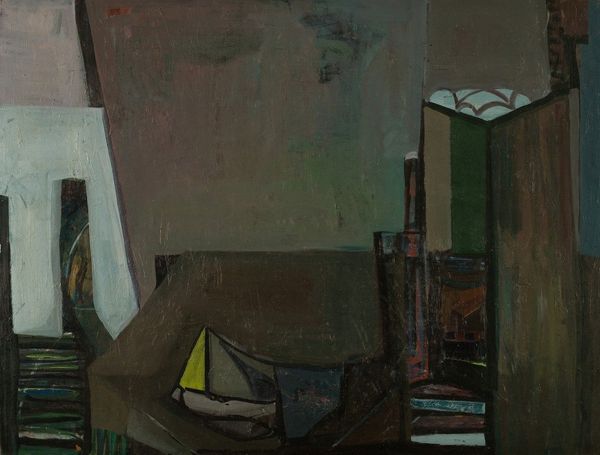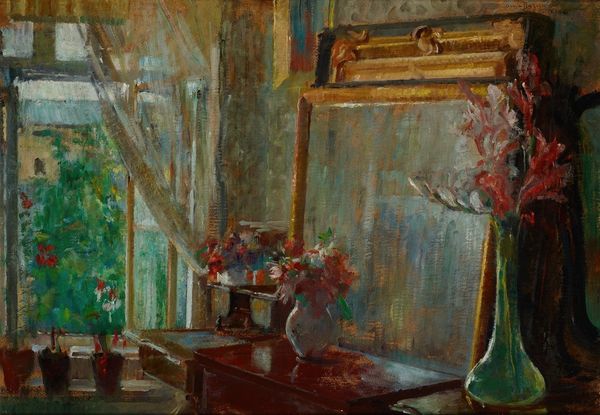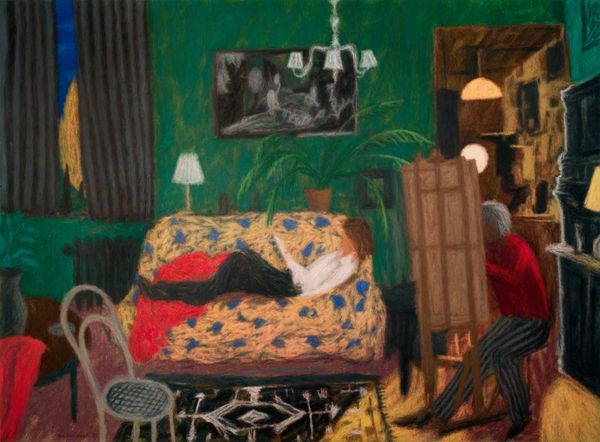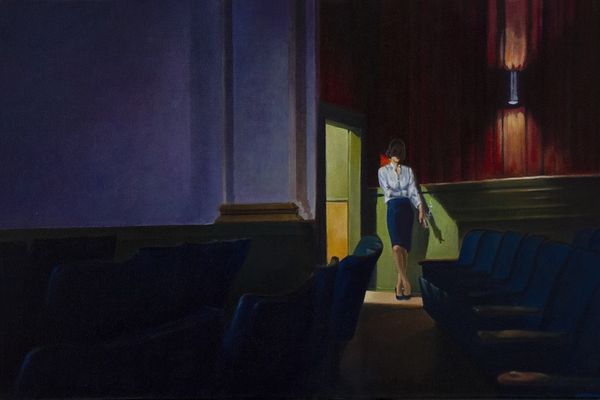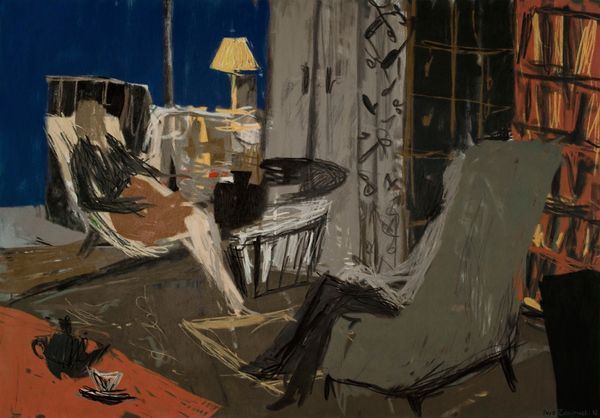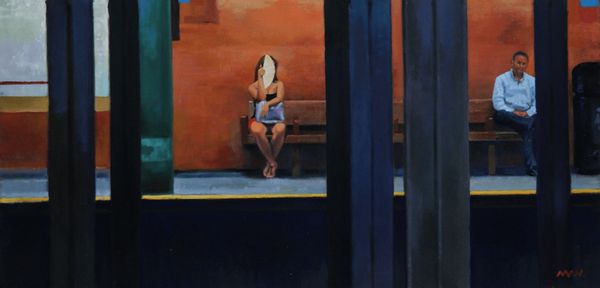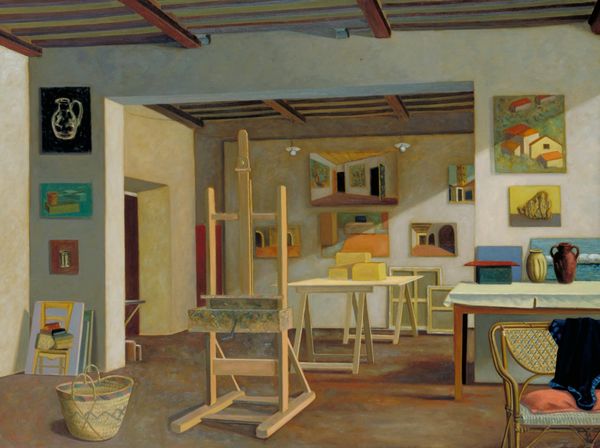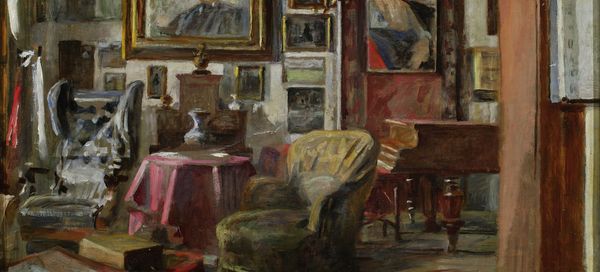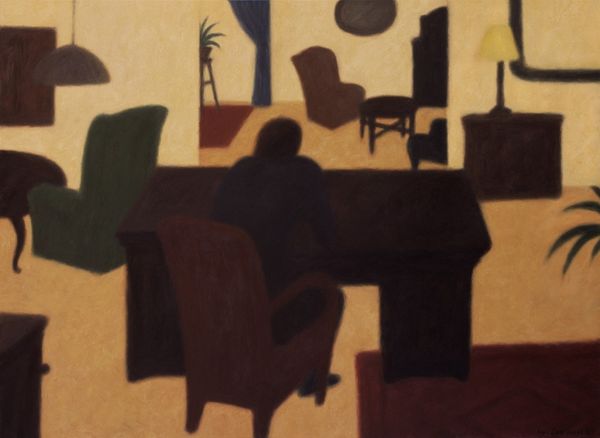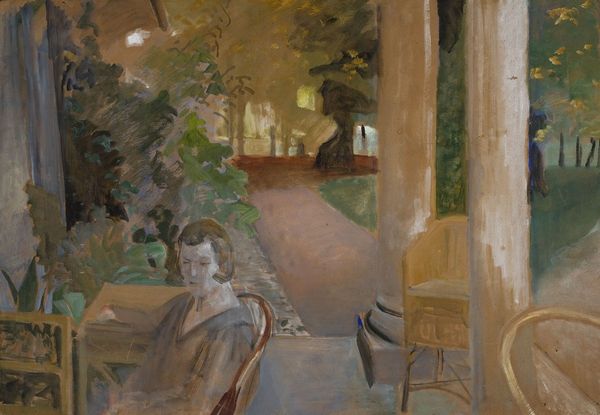
painting, oil-paint
#
self-portrait
#
painting
#
oil-paint
#
oil painting
#
genre-painting
#
modernism
#
realism
Copyright: Catherine Murphy,Fair Use
Editor: Catherine Murphy’s "Self Portrait with Poker Table," painted in 1969 using oil paint, presents a scene that feels both intimate and somewhat unsettling. There's a tension between the mundane objects and the artist's own imposing presence. What catches your eye in this piece, and how do you interpret its overall meaning? Curator: The presence of certain objects and especially their arrangement is compelling, wouldn't you say? The poker table becomes a surrogate for self-reflection. The artist places herself within this domestic space, amidst symbols of chance, leisure, and perhaps even isolation, which together produce an image imbued with psychological density. Note how her self-presentation intersects with broader questions around women, labor and leisure time, in the post-war period. The outdated television set and the card table point to an environment frozen in time. What stories are encoded in these carefully chosen symbols? Editor: It’s fascinating how you draw attention to these individual items and how they symbolize a narrative. The poker table specifically suggests games, risks, strategies...is she gambling with her identity? Curator: Perhaps, or confronting an audience that hasn't caught up to her talent. These items and their arrangement allow us to weave our way through layers of meanings – from the personal to the societal. There's an undeniable undercurrent of complexity lurking beneath the surface of her stoicism. It serves as a commentary on the artist’s place within that historical moment and beyond. Editor: That's given me a lot to consider! It makes me see the self-portrait not just as a depiction of an individual, but as a map of societal norms, the pressure of fitting into a game whose rules are rigged against her and more. Curator: Exactly! Visual artifacts often unlock more information about continuity between the present, past and future, than more traditional resources. The piece evolves in front of you.
Comments
No comments
Be the first to comment and join the conversation on the ultimate creative platform.

